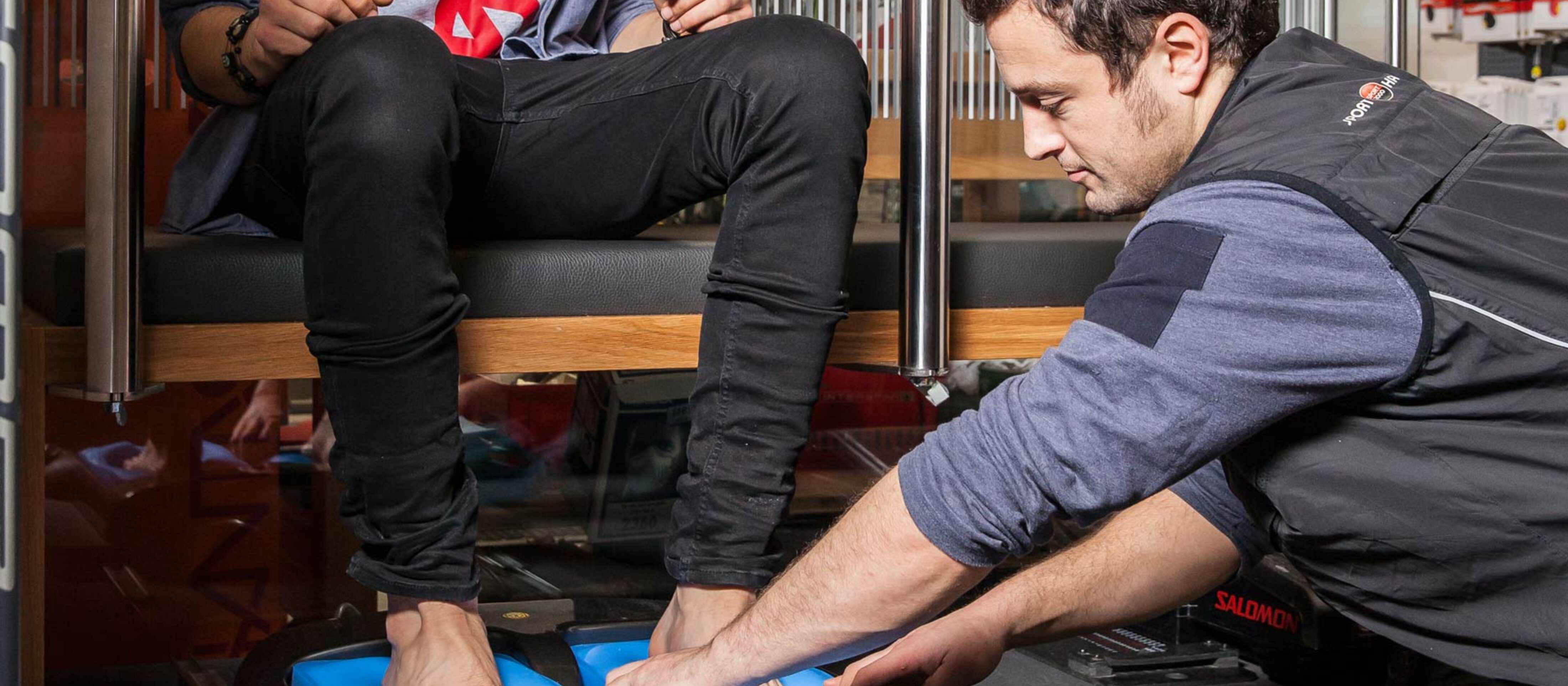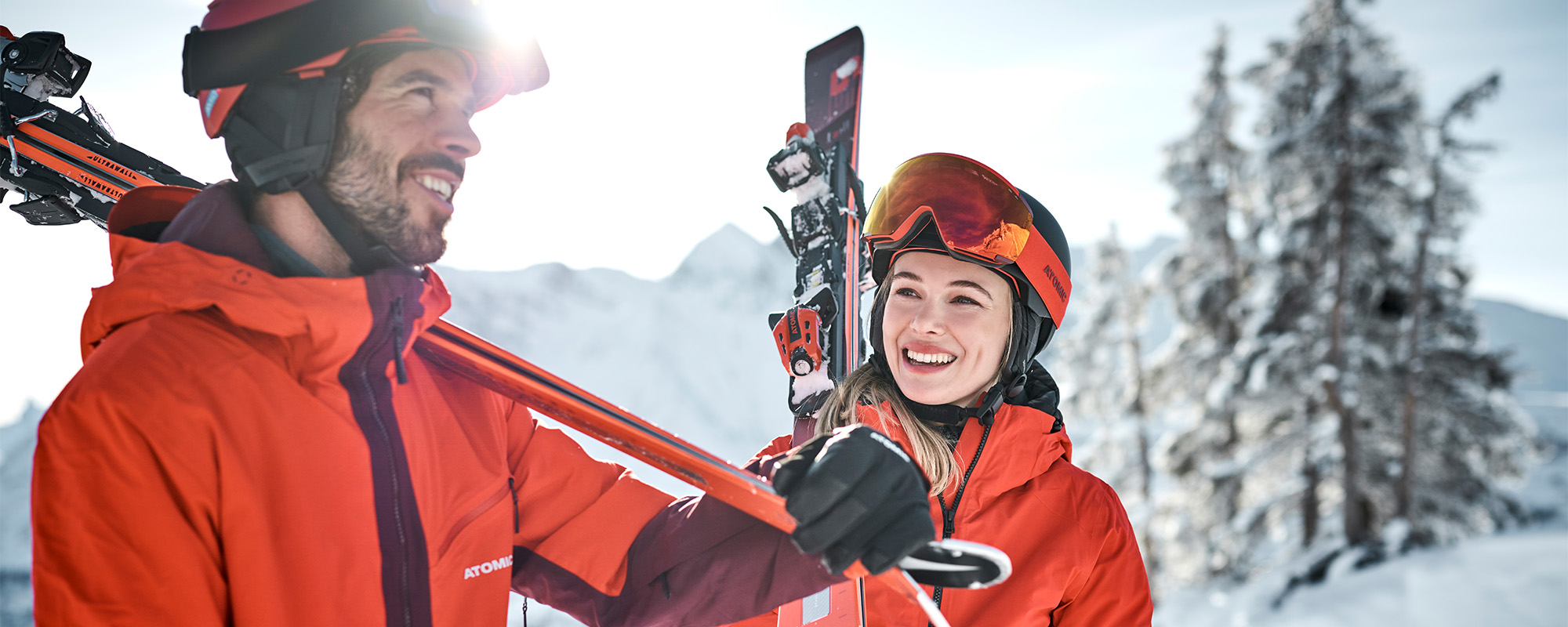BOOT FITTING
AT SPORT HARRY


We believe that there is a perfect solution to every ski boot problem: Questions and answers regarding boot fitting
Sport Harry is a specialist sporting equipment shop located in Montafon that has a tradition stretching back 35 years. Boot fitting has become an essential aspect of skiing.
What should one consider when buying new ski boots?
Samy: The most common problem is customers coming to our shop with boots that are much too large. The size has to be right for everything else to fall into place, like the ankle position.
How can one be sure that the size is right?
Samy: We always first measure the customer's foot. And then of course we try out some boots. As a specialist shop, we have already made a pre-selection when purchasing our wares and have a range of boots for different customer requirements. We always stay up to date and so have much more experience and can recommend the ideal boot for the customer from the variety of products on the market. At Sport Harry, we only want to carry products that really work and that we can sell with a good conscience.
What if the boot I have already bought turns out to be too big and my heel slips? What can one do in such a case?
Samy: Many people buy ski boots like they buy leisure shoes. Many people lack the experience with ski boots to tell what really fits. If I then go to a shop where the salesperson maybe doesn't know his stuff or doesn't have the time, and I buy boots there because they fit like my trainers, then the boots will be far too large.
What about foam inner boots?
Samy: When they're well done, they're great. The most important aspect is the preparation work. The shell and the floor must be done properly.
How do you make perfectly fitting boots?
Samy: What counts when fitting ski boots is experience. At Sport Harry, we have built up a respectable ski boot workshop over the years, as you can see just from our "machine fleet".
I can say that I can handle all common shell materials and can shape them, for instance through localised stretching, milling and thermoplastic deformation. And of course one can also do quite a lot about the inner boots...
So one really should go to a specialist?
Samy: Yes, to Sport Harry! But seriously: yes, definitely. As well as having lots of experience, I also need to be able to size up the guest. Only the customer knows what the boots feel like when they wear them! A ski boot needs to transmit power, and for this it needs to be tight. Some people simply can't stand that. One cannot guarantee that there will never be pressure, and one shouldn't expect that. At the start of the season, one needs to get used to the ski boots again! If one has only been wearing loose shoes all year and then rides for eight hours in brand new ski boots on the first day of the season, don't expect that to be pleasant! That's just common sense.
What different materials are there for boots, and what are the differences between them?
Samy: High-quality alpine boots mainly use polyurethane, and proper World Cup racing boots are made of polyether. Lighter and cheaper boots, and frequently children's boots and some women's models, mostly use polyolefin, a cheaper material. In touring boots one finds a lot of PEBAX, or sometimes Grilamid. They can all be shaped to an extent, but as I already said, one needs to know how to handle these materials, and not everyone can.
Racing boots are always made of one material. What is the advantage of combining several?
Samy: Combinations of two or three materials are very difficult for the companies; the development is very expensive. The advantage is that one can have a lighter boot that is just as solid. The bottom shell is very hard while the top is a bit softer, and the middle, where one opens the boot, is even softer so that one can easily slip in and out. Such boots are harder to shape. That is why racing boots are only made from one material. It is important for racing boots that one part of the boot doesn't suddenly feel different at a different temperature.
What's the lifetime of such a ski boot?
Samy: That's hard to say. The manufacturers say that ski boots should be replaced after at most five years. The plastic loses some of its properties over time because the plasticisers evaporate.
As well as providing adjustments and customisation, Sport Harry sells equipment. Do you feel the competition from online shops?
Samy: The Internet is not a problem; I also like to look at things online. The problem is the consultation theft. You can't begrudge someone for buying something cheaper elsewhere; but if that person first comes to me for a free consultation and I share all my specialist knowledge with them and spend an hour trying out boots, that's not right. If someone wants an extensive consultation, the time has to be paid back somewhere; I can't afford to run this operation as a hobby.
Interested in a personal consultation? Make an appointment right now at +43 5557 210970 or info@sportharry.at.

